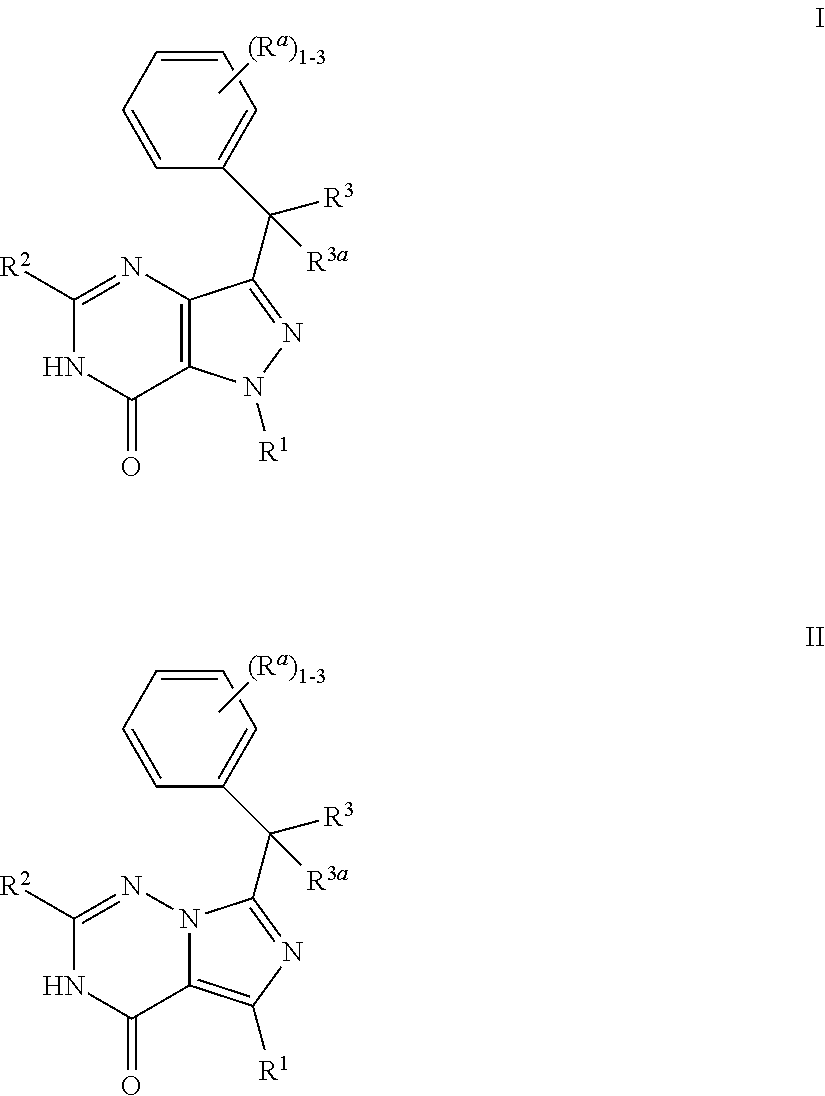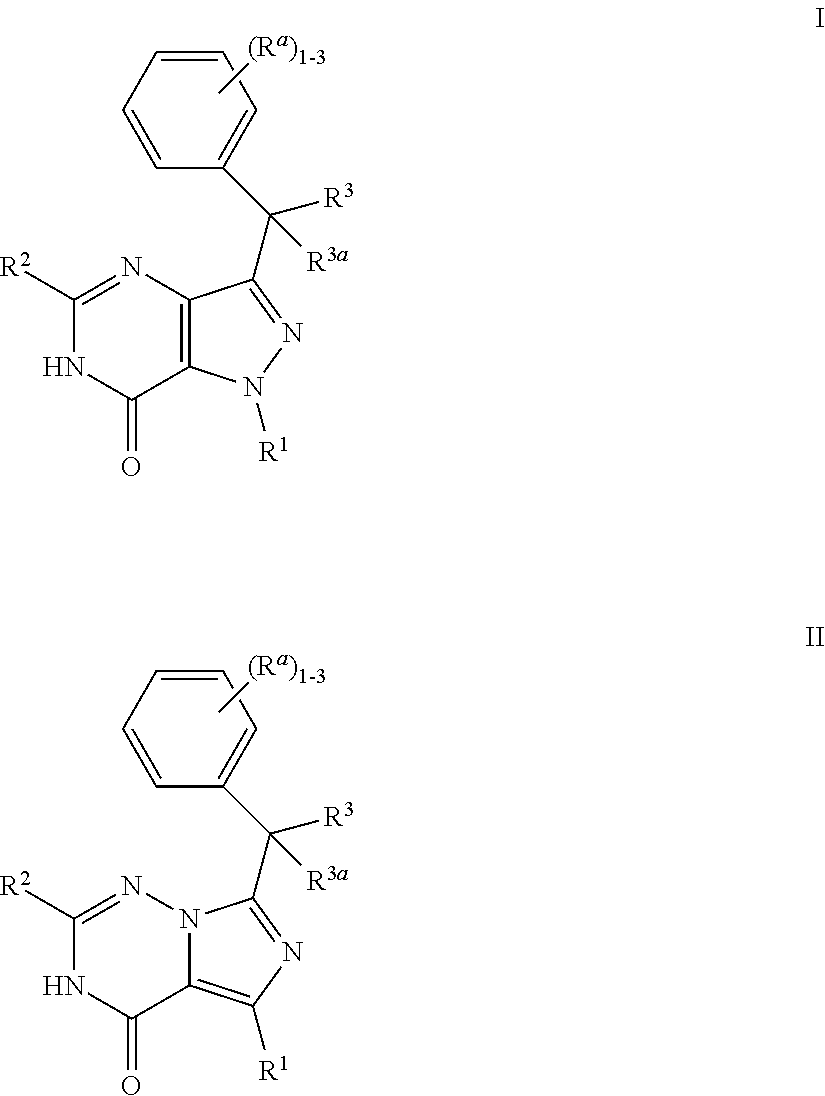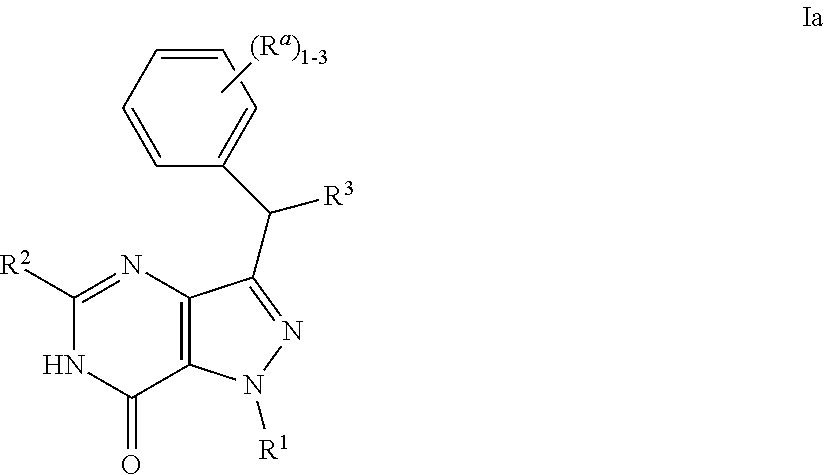Bicyclic heterocyclic compounds as PDE2 inhibitors
a technology inhibitors, which is applied in the field of bicyclic heterocyclic compounds as pde2 inhibitors, can solve the problems of high non-compliance or discontinuation rate of medications, lack of efficacy, and dissatisfaction with therapy
- Summary
- Abstract
- Description
- Claims
- Application Information
AI Technical Summary
Benefits of technology
Problems solved by technology
Method used
Image
Examples
preparatory example 1
[0192]
(S)-((2-Bromopropoxy)methyl)benzene
[0193]To a solution of imidazole (0.98 g, 14.4 mmol) and triphenylphosphine (3.8 g, 14.4 mmol) in DCM (67 mL) under N2 at 0° C. was added bromine (0.74 ml, 14.4 mmol) dropwise. (R)-1-(Benzyloxy)propan-2-ol (2.0 g, 12.0 mmol) was then added slowly to the mixture which was allowed to warm to RT and stir for 12 h. The mixture was concentrated and was diluted with hexane / EtOAc (4:1, 430 mL). The solution was filtered through a short pad silica gel and the filtrated was concentrated under reduced pressure to afford the title compound as a solid which was used without purification. 1H NMR (CDCl3, 500 MHz) δ: 7.72 (m, 2H), 7.59 (m, 1H), 7.45 (m, 2H), 4.62 (s, 2H), 4.21 (m, 1H), 3.71 (m, 1H), 3.62 (m, 1H), 2.81 (m, 2H), 1.76 (d, J=6.5 Hz, 3H).
preparatory example 2
[0194]
(R)-((2-Bromopropoxy)methyl)benzene
[0195]The title compound was prepared using (S)-1-(benzyloxy)propan-2-ol and the procedure set forth in Preparatory Example 1 as a solid which was used without purification. 1H NMR (CDCl3, 500 MHz) δ: 7.72 (m, 2H), 7.59 (m, 1H), 7.45 (m, 2H), 4.61 (s, 2H), 4.20 (m, 1H), 3.71 (m, 1H), 3.62 (m, 1H), 2.81 (m, 2H), 1.76 (d, J=6.5 Hz, 3H).
examples 1 and 2
[0196]
(R)- or (S)-5-Methyl-3-(1-(4-(trifluoromethyl)phenyl)ethyl)-1H-pyrazolo[4,3-d]pyrimidin-7(6H)-one (Scheme 1)
Step 1—5-Methyl-1H-pyrazolo[4,3-d]pyrimidin-7(6H)-one
[0197]To a solution of ethyl 4-amino-1H-pyrazole-5-carboxylate (2.3 g, 14.8 mmol) in pyridine (25 mL) under N2 at rt was added benzyl ethanimidothioate hydrochloride (3.0 g, 14.8 mmol). The mixture was affixed with a reflux condenser, heated to 115° C., and stirred overnight at this temperature. The mixture was cooled to rt and was concentrated under reduced pressure to afford a residue that was suspended in EtOH (30 mL) and H2O (10 mL). The mixture was treated with 1 M NaOH until pH˜7 and the resultant solid was filtered off. The solid was washed with water and dried under high vacuum overnight to afford the title compound as a solid. 1H NMR (DMSO, 500 MHz) δ: 8.92 (s, 1H), 8.01 (br s, 2H), 2.45 (s, 3H). MS=151.1 (M+H)+.
Step 2. 3-Bromo-5-methyl-H-pyrazolo[4,3-d]pyrimidin-7(6H)-one
[0198]To a suspension of 5-methyl-1H-p...
PUM
| Property | Measurement | Unit |
|---|---|---|
| flow rate | aaaaa | aaaaa |
| flow rate | aaaaa | aaaaa |
| temperature | aaaaa | aaaaa |
Abstract
Description
Claims
Application Information
 Login to View More
Login to View More - R&D
- Intellectual Property
- Life Sciences
- Materials
- Tech Scout
- Unparalleled Data Quality
- Higher Quality Content
- 60% Fewer Hallucinations
Browse by: Latest US Patents, China's latest patents, Technical Efficacy Thesaurus, Application Domain, Technology Topic, Popular Technical Reports.
© 2025 PatSnap. All rights reserved.Legal|Privacy policy|Modern Slavery Act Transparency Statement|Sitemap|About US| Contact US: help@patsnap.com



